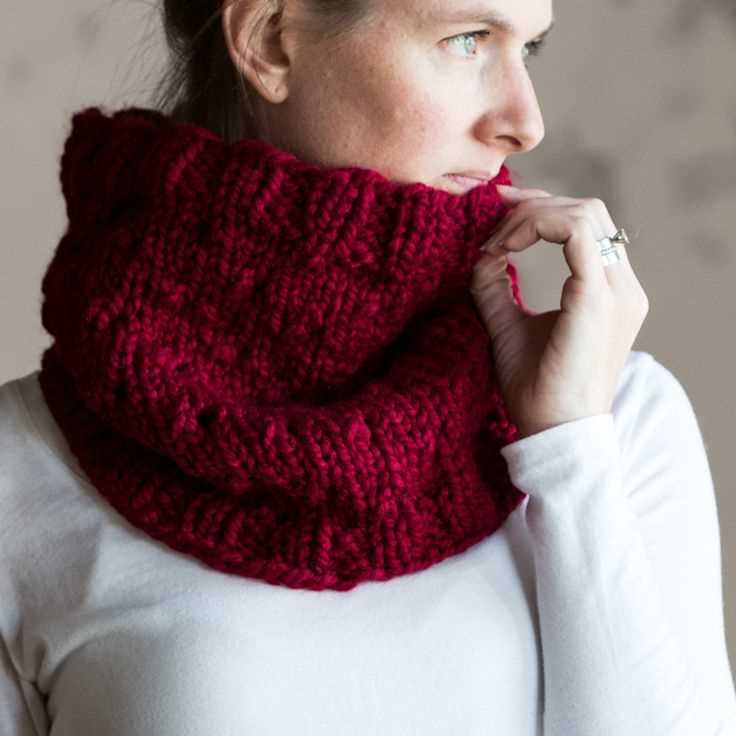
A cowl is a versatile accessory that can keep you warm and stylish during the cold winter months. It is a knitted tube that can be worn around the neck like a scarf or pulled up over the head like a hood. The great thing about cowls is that they are quick and easy to make, and there are countless patterns available to suit all skill levels.
If you are new to knitting, a cowl is a perfect project to start with. It requires just a few basic knitting techniques, such as casting on, knitting, and binding off. You can choose from a wide variety of yarns and colors to create a cowl that reflects your personal style. You can also experiment with different stitch patterns to add texture and visual interest to your cowl.
One popular cowl knitting pattern is the seed stitch cowl. The seed stitch is a simple yet elegant stitch pattern that creates a dense, textured fabric. It is achieved by alternating knit and purl stitches in a specific sequence. The seed stitch cowl is a great project for beginners, as it allows you to practice the seed stitch while creating a stylish accessory. You can make it as wide or as narrow as you like, and it can be worn long or wrapped around the neck multiple times for extra warmth.
Cowl Knitting Pattern
A cowl is a versatile and stylish accessory that can be knitted in various patterns and styles. Whether you’re a beginner knitter or an experienced one, there is a cowl knitting pattern that suits your skill level and personal style.
One popular cowl knitting pattern is the seed stitch cowl. The seed stitch creates a textured pattern that adds visual interest to the cowl. To knit the seed stitch cowl, you will need a medium-weight yarn and circular knitting needles. The pattern is simple: alternate between knitting one stitch and purling one stitch in every row. The result is a cozy and warm cowl that can be worn with any outfit.
Another popular cowl pattern is the lace cowl. This pattern is more intricate and requires intermediate knitting skills. The lace cowl features a delicate and intricate lace pattern that adds a feminine touch to any outfit. To knit the lace cowl, you will need a lace-weight yarn and circular knitting needles. The pattern involves knitting and purling stitches in a specific sequence to create the lace pattern. The end result is a lightweight and elegant cowl that can be worn for special occasions.
If you’re looking for a quick and easy cowl knitting pattern, the garter stitch cowl is a great option. The garter stitch is one of the simplest knitting patterns, making it perfect for beginners. To knit the garter stitch cowl, you will need a chunky yarn and straight knitting needles. The pattern involves knitting every stitch in every row, creating a thick and cozy cowl. This pattern is perfect for when you need a last-minute gift or want to quickly add a touch of warmth to your outfit.
There are countless cowl knitting patterns available, ranging from simple and basic to intricate and advanced. Whether you prefer texture, lace, or simplicity, there is a cowl knitting pattern that allows you to showcase your knitting skills and create a unique and stylish accessory.
Types of Cowl Knitting Patterns
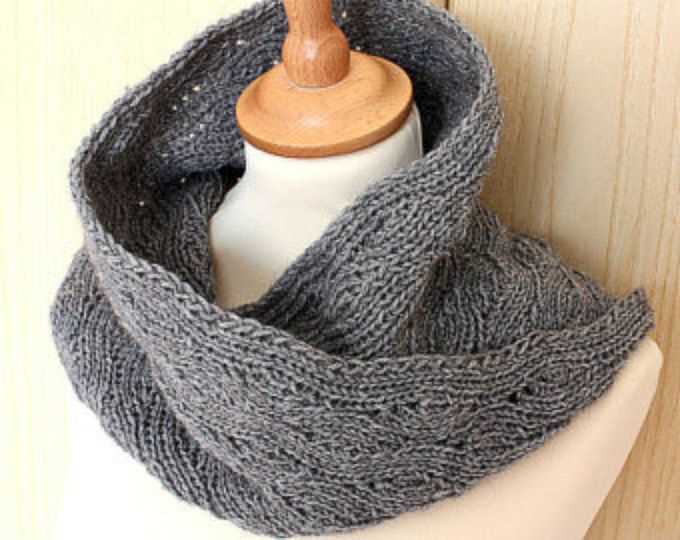
If you’re a knitting enthusiast, you know that cowls are versatile accessories that can add warmth and style to any outfit. Whether you’re a beginner or an experienced knitter, there are different types of cowl knitting patterns to suit your skill level and personal style.
1. Basic Cowl
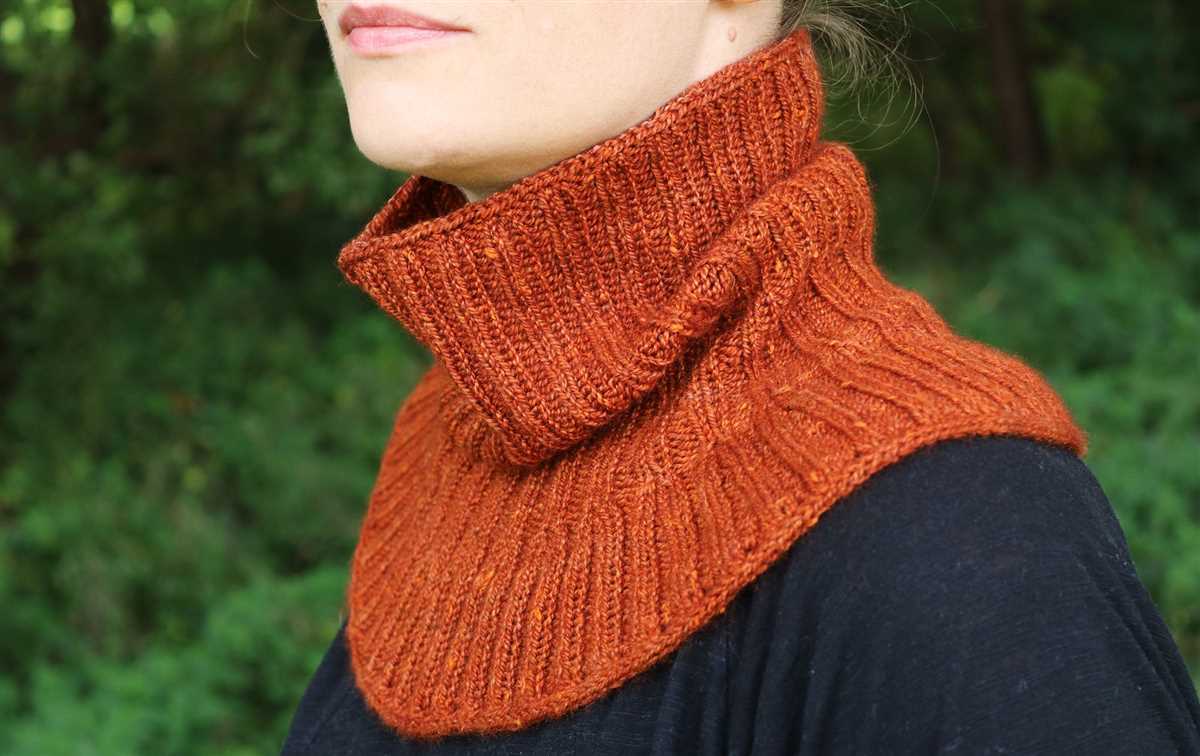
The basic cowl is a great pattern for beginners. It usually involves knitting in the round and using simple stitches like knit and purl. This type of cowl is perfect for showcasing beautiful yarn and can be worn loosely or wrapped around the neck for extra warmth.
2. Cable Cowl
If you’re looking for a more intermediate challenge, the cable cowl is a great option. It involves working cable stitches to create intricate and textured designs. Cable cowls are not only practical but also fashionable, adding a touch of sophistication to any outfit. They are perfect for colder weather and make great gifts.
3. Lace Cowl
Lace cowls are delicate and feminine accessories that can add a touch of elegance to any outfit. These patterns involve working lace stitches and are great for intermediate knitters looking to try something new. Lace cowls can be worn year-round, and lighter yarns are often used to create a delicate and airy feel.
4. Colorwork Cowl
If you enjoy working with multiple colors, the colorwork cowl is the perfect pattern for you. This type of cowl involves knitting with two or more colors to create intricate patterns. Fair Isle and stranded knitting are popular techniques used in colorwork cowls. These accessories are not only stylish but also provide extra warmth during the colder months.
5. Chunky Cowl
For those who love a cozy and warm accessory, the chunky cowl is the way to go. These patterns use chunky or bulky weight yarns and larger knitting needles to create a thick and chunky texture. Chunky cowls are quick projects that can be completed in no time and are perfect for staying warm and stylish during the winter season.
Whether you prefer a basic cowl or want to try more advanced techniques like cables or colorwork, there’s a cowl knitting pattern out there for you. Explore different patterns, experiment with different yarns and colors, and have fun creating your own unique cowls.
How to Choose the Right Yarn for Your Cowl
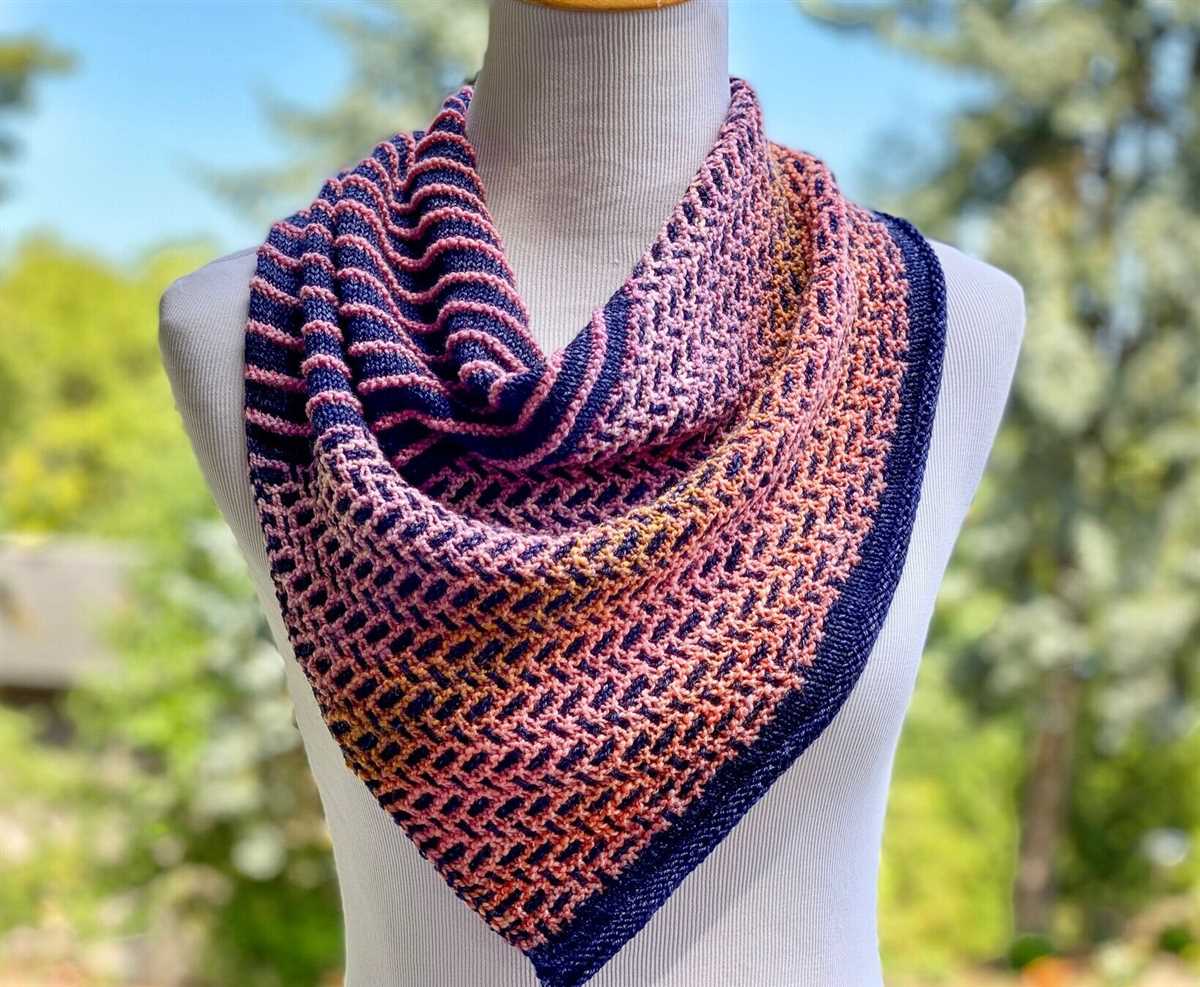
When it comes to knitting a cowl, choosing the right yarn is essential to ensure that your finished project turns out just the way you want it. The yarn you choose will affect the drape, warmth, and overall look of your cowl. Here are a few factors to consider when selecting the perfect yarn for your cowl knitting project.
Weight and Thickness
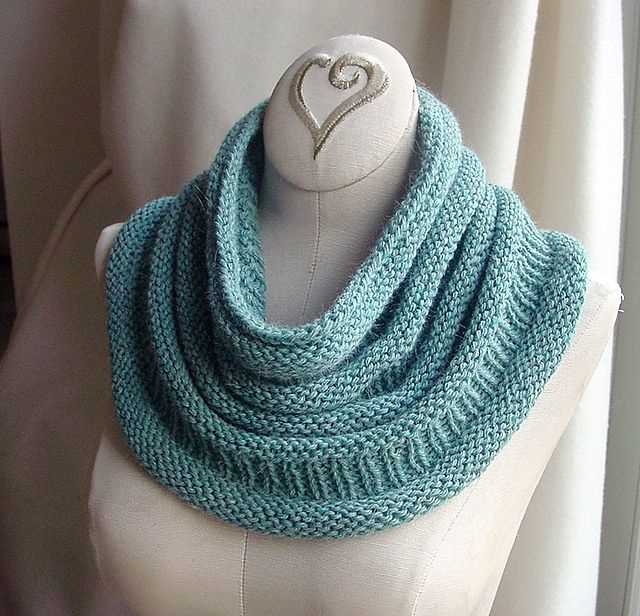
The weight and thickness of the yarn you choose will have a significant impact on the final product. If you want a lightweight and delicate cowl, opt for a lace or fingering weight yarn. For a more substantial and cozy cowl, consider a bulky or super bulky weight yarn. Keep in mind that the weight of the yarn will also affect the amount of yardage needed for your project, so ensure that you have enough yarn to complete your desired cowl size.
Fiber Content
The fiber content of the yarn will determine the quality, feel, and performance of your cowl. Natural fibers like wool, alpaca, and mohair are popular choices for cowls as they provide warmth and softness. However, if you have sensitive skin or allergies, you may prefer a synthetic yarn such as acrylic or nylon. Consider the specific qualities you desire in your cowl and choose a yarn that aligns with those preferences.
Color and Texture
The color and texture of the yarn can play a significant role in the overall appearance of your cowl. If you want a bold and vibrant cowl, opt for yarns with bright or variegated colors. If you prefer a more subtle and classic look, choose solid or neutral-colored yarns. Additionally, consider the texture of the yarn, whether you want a smooth and sleek cowl or one with more texture and dimension. Keep in mind that certain stitch patterns or cowl designs may showcase the yarn’s texture more prominently.
By considering the weight, fiber content, color, and texture of the yarn, you can choose the perfect yarn for your cowl knitting project. Take the time to browse different options, feel the yarn in person if possible, and envision how it will work with your desired pattern or design. With the right yarn, you’ll be on your way to creating a beautiful and cozy cowl that you’ll love to wear. Happy knitting!
Essential Knitting Techniques for Cowl Patterns
Knitting cowls is a popular hobby for many crafters, and with the right techniques, you can create beautiful and cozy cowls to add to your wardrobe. Whether you’re a beginner or an experienced knitter, there are a few essential techniques to master when working on cowl patterns.
1. Casting On
The first step in any knitting project is to cast on. When knitting a cowl, the long tail cast on method is often used. This method creates a sturdy and neat edge, which is important for the structure of the cowl. Make sure to leave a long tail when casting on to ensure you have enough yarn to work with.
2. Knitting in the Round
Most cowl patterns are knit in the round, which means that you will be knitting in a continuous circle. To start knitting in the round, you will need to join your cast on stitches to create a seamless tube. You can use circular needles or double-pointed needles, depending on your preference. Be sure to keep your tension consistent to avoid any gaps or holes in your cowl.
3. Stitch Patterns
Cowls can feature a variety of stitch patterns to add visual interest and texture. Some common stitch patterns for cowls include ribbing, cables, lace, and seed stitch. Follow the pattern instructions carefully to create the desired stitch pattern. Pay attention to any increases, decreases, or yarn overs that may be necessary to achieve the pattern.
4. Binding Off
Once you have completed the desired length of your cowl, it’s time to bind off. The bind off method you choose will depend on the look you want for your finished edge. The standard bind off is a simple and reliable method, but you can also experiment with stretchier bind off methods for a looser and more comfortable edge.
By mastering these essential knitting techniques, you’ll be well-equipped to tackle any cowl pattern that catches your eye. Have fun experimenting with different stitch patterns and creating cozy accessories to keep you warm during the colder months.
Knitting Tips for Beginners
If you are new to knitting, it can feel overwhelming at first. However, with some practice and the right tips, you’ll soon be on your way to creating beautiful knitted pieces. Here are some helpful tips for beginners:
Start with the basics
Before attempting complex patterns, it’s important to master the basic stitches. Start with simple projects like scarves or dishcloths that only require knit and purl stitches. This will help you develop your knitting skills and build confidence.
Choose the right yarn and needles
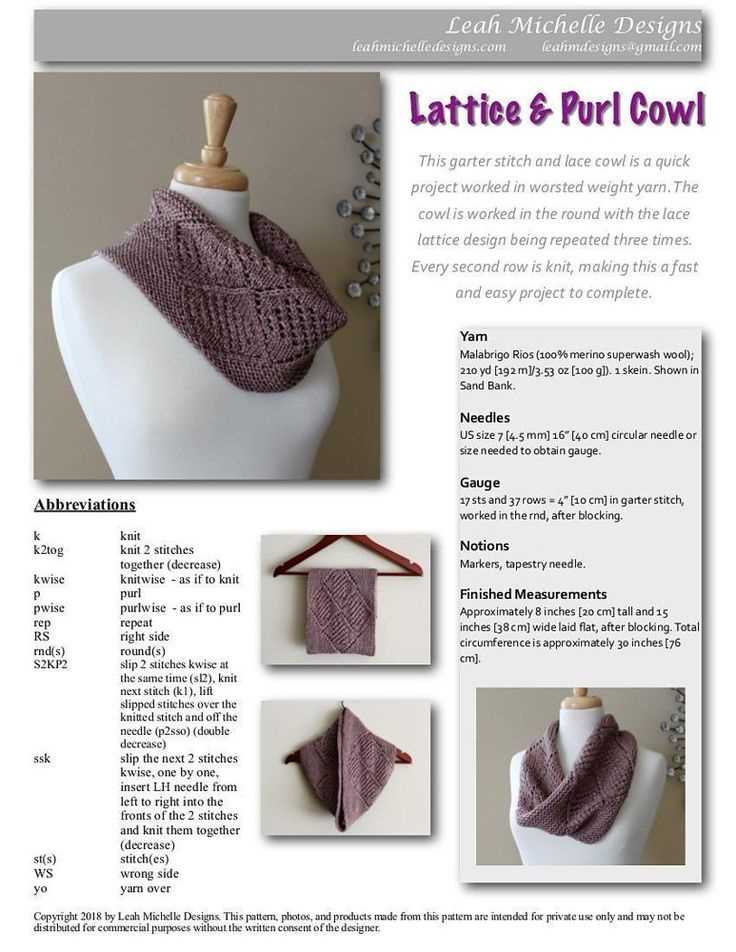
When starting out, it’s best to choose medium-weight yarn and a pair of medium-sized needles. This will make it easier to see your stitches and learn the basic techniques. As you gain more experience, you can experiment with different yarn weights and needle sizes to create different effects.
Practice tension control
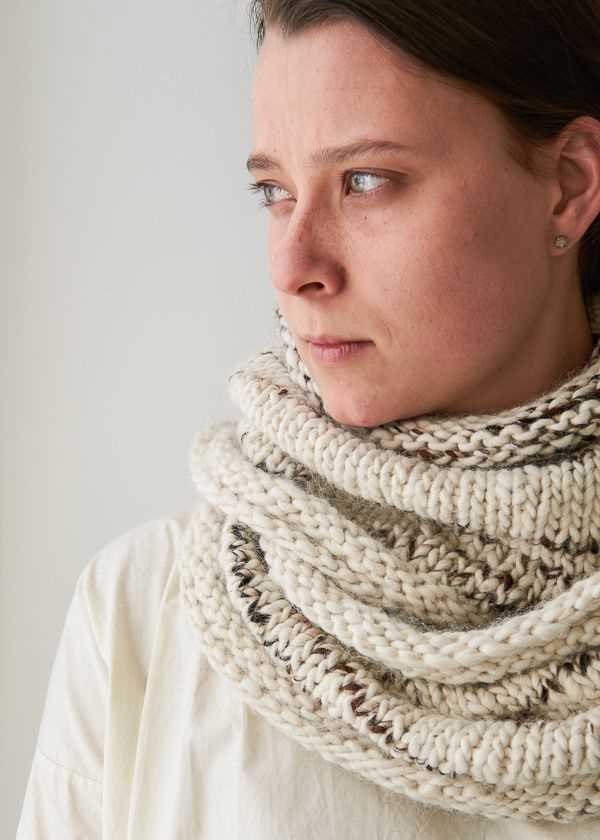
One of the most important aspects of knitting is controlling your tension. Tension refers to how tightly or loosely you hold the yarn while knitting. It’s essential to find a tension that allows you to create even stitches. Practice knitting with different tensions to find what works best for you.
Don’t be afraid to make mistakes
Mistakes are a part of the learning process, so don’t get discouraged if you make them. Instead, view them as an opportunity to learn and improve. If you notice a mistake in your knitting, try to fix it or unravel the stitches and start again. By doing so, you’ll become a better knitter in the long run.
Seek out resources and support
There are many resources available to help beginners learn knitting. Look for online tutorials, instructional books, or local knitting groups where you can learn from more experienced knitters. Don’t hesitate to ask for help or advice when you need it. Knitting is a community, and fellow knitters are often happy to share their knowledge.
Be patient and enjoy the process
Remember that knitting is a skill that takes time to develop. Be patient with yourself and enjoy the process of creating something with your own hands. Embrace the meditative and relaxing nature of knitting, and don’t be too hard on yourself if you don’t get it right the first time. With practice, you’ll see improvement and be able to create more complex and intricate designs.
Using Different Stitch Patterns for Cowl Knitting
Knitting a cowl is a great project for knitters of all skill levels, and one way to make your cowl unique is to incorporate different stitch patterns. By using different stitches, you can create a cowl that not only keeps you warm but also showcases your knitting skills.
One popular stitch pattern for cowls is the seed stitch. This stitch creates a textured fabric with alternating knit and purl stitches. The seed stitch is simple to knit but adds a lot of visual interest to your cowl. It’s a great choice if you’re looking for a stitch pattern that is both easy to memorize and looks beautiful.
Here are some other stitch patterns you can try for your cowl knitting:
-
Rib stitch: This stitch pattern creates columns of alternating knit and purl stitches. It’s a versatile stitch that can be used for both simple and more intricate designs. The rib stitch is known for its elasticity, making it a great choice for cowls that need to stretch.
-
Cable stitch: If you’re looking to add a bit of complexity and texture to your cowl, try using a cable stitch pattern. Cables are created by crossing specific stitches over each other, resulting in a twisted pattern. Cable stitches can be simple, with just a few twists, or intricate, with multiple cables woven together.
-
Lace stitch: Lace stitches are often associated with delicate shawls and doilies, but they can also be used to create beautiful cowls. Lace stitch patterns involve creating intentional holes in the fabric, resulting in an open and airy design. Lace stitches can be simple, with just a few yarn overs and decreases, or more intricate, with complex lace motifs.
When choosing a stitch pattern for your cowl, consider the yarn you’re using and the intended purpose of the cowl. Thicker yarns and more complex stitch patterns can create a chunky, cozy cowl, while lighter yarns and delicate lace stitches can result in an elegant and lightweight accessory. Experiment with different stitch patterns to find the perfect one for your cowl knitting project!
Cowl Knitting Patterns for Different Seasons
Knitting cowls can be a fun and rewarding project for any season. Whether you’re looking for a cozy winter accessory or a lightweight option for spring and summer, there are cowl knitting patterns available to suit your needs.
Winter Cowls:
During the colder months, a thick and warm cowl is essential for staying cozy and stylish. Chunky yarns and intricate cable patterns are popular choices for winter cowls. These patterns often feature longer lengths that can be doubled or tripled up for extra warmth around the neck. Using wool or alpaca yarns can provide the necessary insulation needed for braving the chilly winter weather.
Spring Cowls:
As the weather starts to warm up, you may be looking for a cowl pattern that is lighter and more breathable. Lace knitting patterns are perfect for spring cowls, as they create beautiful and airy designs. Using a cotton or bamboo yarn can also help to keep you cool on those warmer spring days. Opting for shorter lengths or infinity scarf styles can add versatility to your spring wardrobe.
Summer Cowls:
While it may seem counterintuitive to knit during the summer, there are still cowl patterns that can be enjoyed during this season. Lightweight and openwork patterns are ideal for summer cowls, allowing for airflow and comfort. Linen and silk yarns can be great choices for their cool and luxurious feel. Consider knitting a cowl in a vibrant color or incorporating fun stitch patterns to add a pop of summer style to your outfit.
No matter the season, there is a cowl knitting pattern available to suit your preferences and needs. Whether you prefer cozy and warm or light and breathable, you can find the perfect pattern to create a stylish accessory for any time of year.
Customizing Your Cowl with Embellishments
When it comes to knitting cowls, they offer a versatile canvas for adding personal touches and embellishments. Whether you are a beginner or an experienced knitter, there are countless ways to customize your cowl and make it uniquely yours.
1. Cables and Textures: One popular way to add visual interest to your cowl is by incorporating cables and textured stitching patterns. You can create intricate cable designs or experiment with textured stitches like seed stitch or ribbing to give your cowl a more dynamic and three-dimensional look.
2. Colorwork: Another way to customize your cowl is through colorwork. You can use different colored yarns to create stripes, fair isle patterns, or even intricate motifs. Colorwork allows you to play with contrasting or complementary colors to make your cowl truly unique.
3. Appliques and Embroidery: If you want to take your cowl customization to the next level, consider adding appliques or embroidery. You can knit small shapes like flowers or leaves separately and sew them onto your cowl, or you can embroider intricate designs directly onto the fabric. This allows you to add a pop of color or create a focal point on your cowl.
4. Button or Toggle Closures: Adding a button or toggle closure to your cowl can give it a functional and fashionable twist. You can choose buttons or toggles in different colors, shapes, and sizes to match your personal style. This customizable feature not only adds visual interest but also allows you to adjust the fit of your cowl.
5. Beads and Sequins: For those looking for a touch of glamour, adding beads or sequins can instantly elevate your cowl. You can thread beads onto your yarn as you knit or sew sequins onto the finished cowl to give it a sparkly and eye-catching look. This embellishment option is perfect for special occasions or when you want to make a statement.
6. Pom-poms and Tassels: Finally, if you want to add some playful and whimsical elements to your cowl, consider adding pom-poms or tassels. These fun accessories can be easily attached to the corners or edges of your cowl, adding a touch of personality and movement to your finished piece.
Caring for Your Knitted Cowl
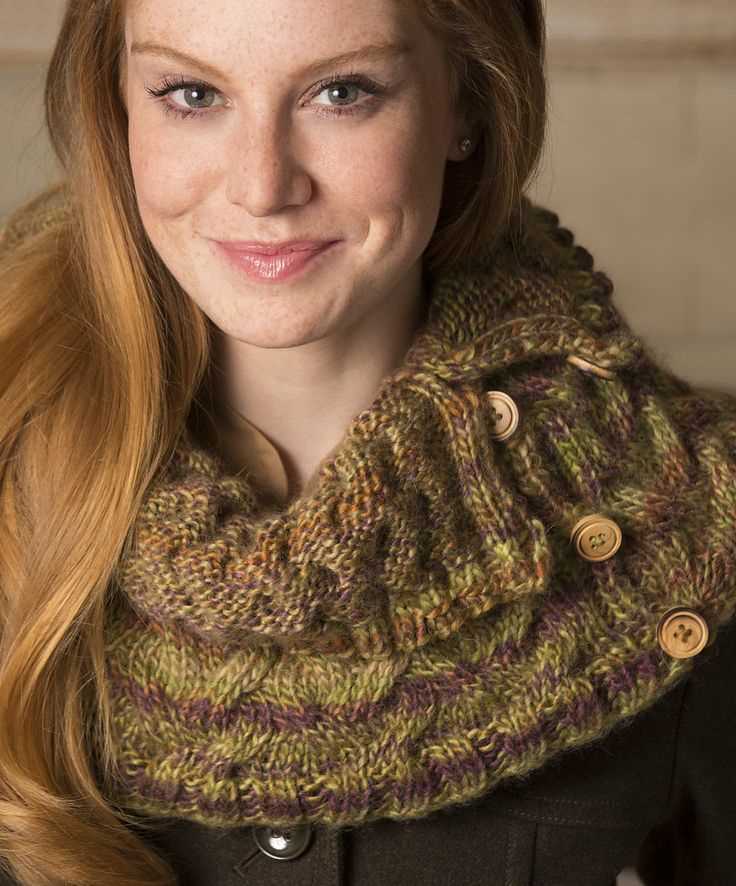
When you spend time and effort knitting a cowl, it’s important to take proper care of it to ensure it stays in top condition for years to come. Here are some tips to help you care for your knitted cowl:
1. Handwashing
The best way to clean your knitted cowl is by handwashing. Fill a sink or basin with lukewarm water and add a gentle wool wash or mild detergent. Immerse the cowl in the water, gently swish it around, and then let it soak for about 10 minutes. Rinse the cowl thoroughly with lukewarm water and gently squeeze out the excess water (avoid wringing or twisting). Lay the cowl flat on a clean towel and roll it up to remove more water. Finally, reshape the cowl and lay it flat to dry.
2. Blocking
Blocking is a crucial step in maintaining the shape and drape of your knitted cowl. To block your cowl, you’ll need blocking mats or towels, rust-proof pins, and a spray bottle with water. Lay the cowl flat on the blocking surface and use rust-proof pins to gently stretch and shape it to the desired measurements. Spray the cowl with water until it is evenly damp, but not soaking wet. Leave the cowl to dry completely before removing the pins.
3. Storage
When storing your knitted cowl, it’s important to protect it from moths and other pests. You can use a garment bag, a ziplock bag, or a pillowcase to store your cowl. Make sure it is clean and completely dry before storing it. Additionally, avoid hanging your cowl as it can stretch and lose its shape over time. Instead, fold it neatly and place it in a drawer or on a shelf.
By following these care instructions, you can keep your knitted cowl looking beautiful and wearable for years to come.
Tips on How to Style a Cowl
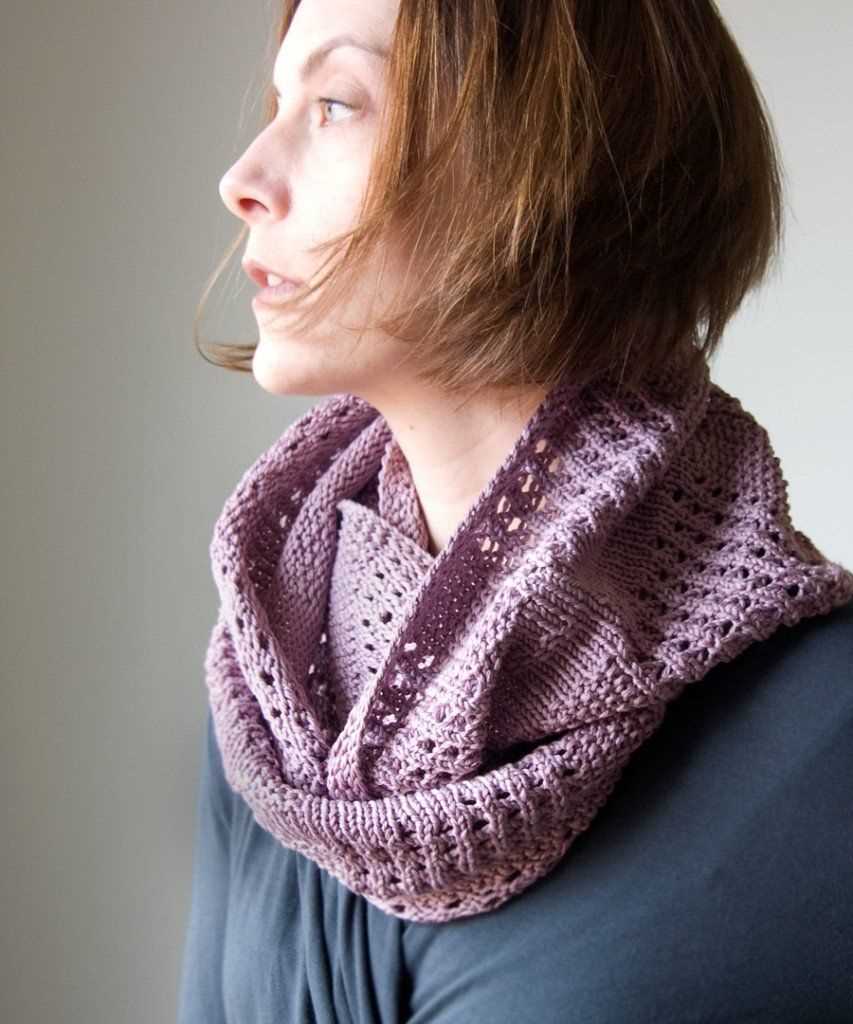
A cowl is a versatile accessory that can add style and warmth to any outfit. Whether you’re wearing it with a casual sweater or dressing it up for a formal event, here are some tips on how to style a cowl:
1. Layer it with a Jacket or Coat
One way to style a cowl is to layer it with a jacket or coat. This not only adds an extra layer of warmth but also creates a stylish look. Pair a chunky knit cowl with a leather jacket for a cool and edgy vibe, or wear a lightweight cowl with a trench coat for a more polished and sophisticated look.
2. Wear it as a Standalone Accessory
A cowl can also be worn as a standalone accessory, without any other layers. This is a great option if you want to show off the intricate pattern or texture of the cowl. Simply drape it around your neck and let it hang loosely for a relaxed and effortless look. You can also experiment with different ways of wrapping or twisting the cowl to create a unique and eye-catching style.
3. Match it with Your Outfit
When styling a cowl, it’s important to consider the colors and patterns of your outfit. For a cohesive and put-together look, choose a cowl that complements the colors in your outfit. If you’re wearing a neutral-toned outfit, opt for a cowl in a bold or vibrant color to add a pop of contrast. Alternatively, if your outfit is already quite busy with patterns, choose a solid-colored cowl to keep the focus on the main pieces.
4. Experiment with Different Lengths
Cowls come in various lengths, from short and snug to long and loose. Experiment with different lengths to find the one that suits your style and outfit. A longer cowl can be wrapped around multiple times for a cozy and layered look, while a shorter cowl can be worn more loosely for a casual and relaxed vibe. Don’t be afraid to try different lengths to see what works best for you.
In conclusion, a cowl is a versatile accessory that can be styled in various ways. Whether you choose to layer it with a jacket, wear it as a standalone accessory, match it with your outfit, or experiment with different lengths, the key is to have fun and express your personal style. So go ahead and rock that cowl with confidence!
Knitting Community Resources for Cowl Patterns
If you’re interested in knitting cowls, there are many online resources available to help you find patterns, get inspiration, and connect with other knitters. Whether you’re a beginner looking for simple designs or an experienced knitter searching for more advanced techniques, there’s something for everyone in the knitting community. Here are some resources to explore:
1. Ravelry
Ravelry is an online community for knitters and crocheters that offers a vast collection of patterns for all skill levels. You can filter your search specifically for cowl patterns and find a wide range of options. Ravelry also allows you to connect with other knitters, join groups, and participate in discussions about various knitting topics.
2. Knitting Blogs
Many knitting bloggers share their knowledge and patterns for free on their websites. You can find a variety of cowl patterns on knitting blogs, along with tips, tricks, and step-by-step instructions. Some popular knitting blogs include KnittingHelp, Knitty, and LoveKnitting.
3. YouTube Tutorials
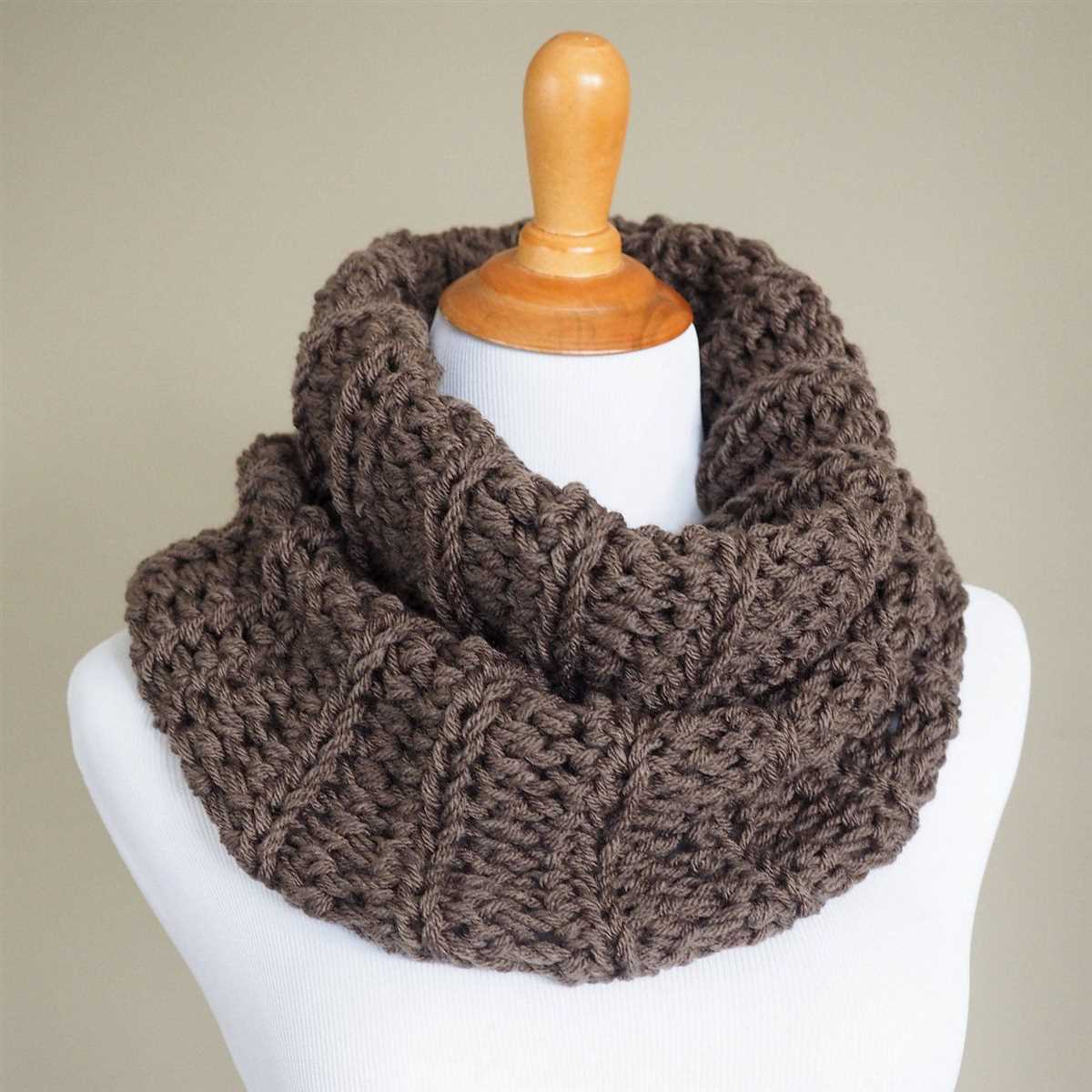
YouTube is a great resource for visual learners. Many knitters and knitting instructors upload video tutorials on their channels, demonstrating various cowl knitting techniques. You can search for specific stitches or patterns and follow along with the video to learn new skills.
4. Local Yarn Shops
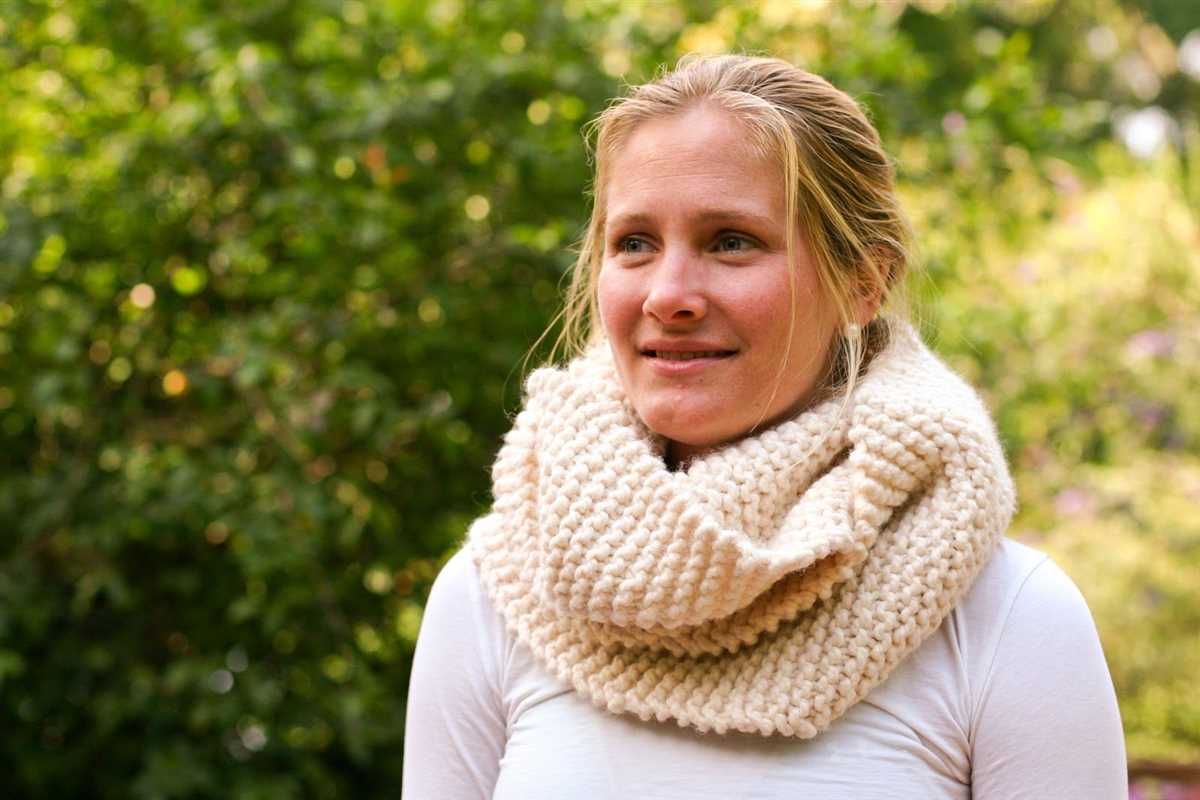
Supporting local businesses and connecting with your local knitting community can be a rewarding experience. Visit your nearby yarn shops to check out their selection of cowl patterns and ask for recommendations. You might find knitting groups or classes where you can learn and share your passion for knitting.
With these resources, you’ll never run out of ideas for your next cowl knitting project. Explore different patterns, techniques, and materials to create beautiful and cozy cowls to keep you warm during the colder months.